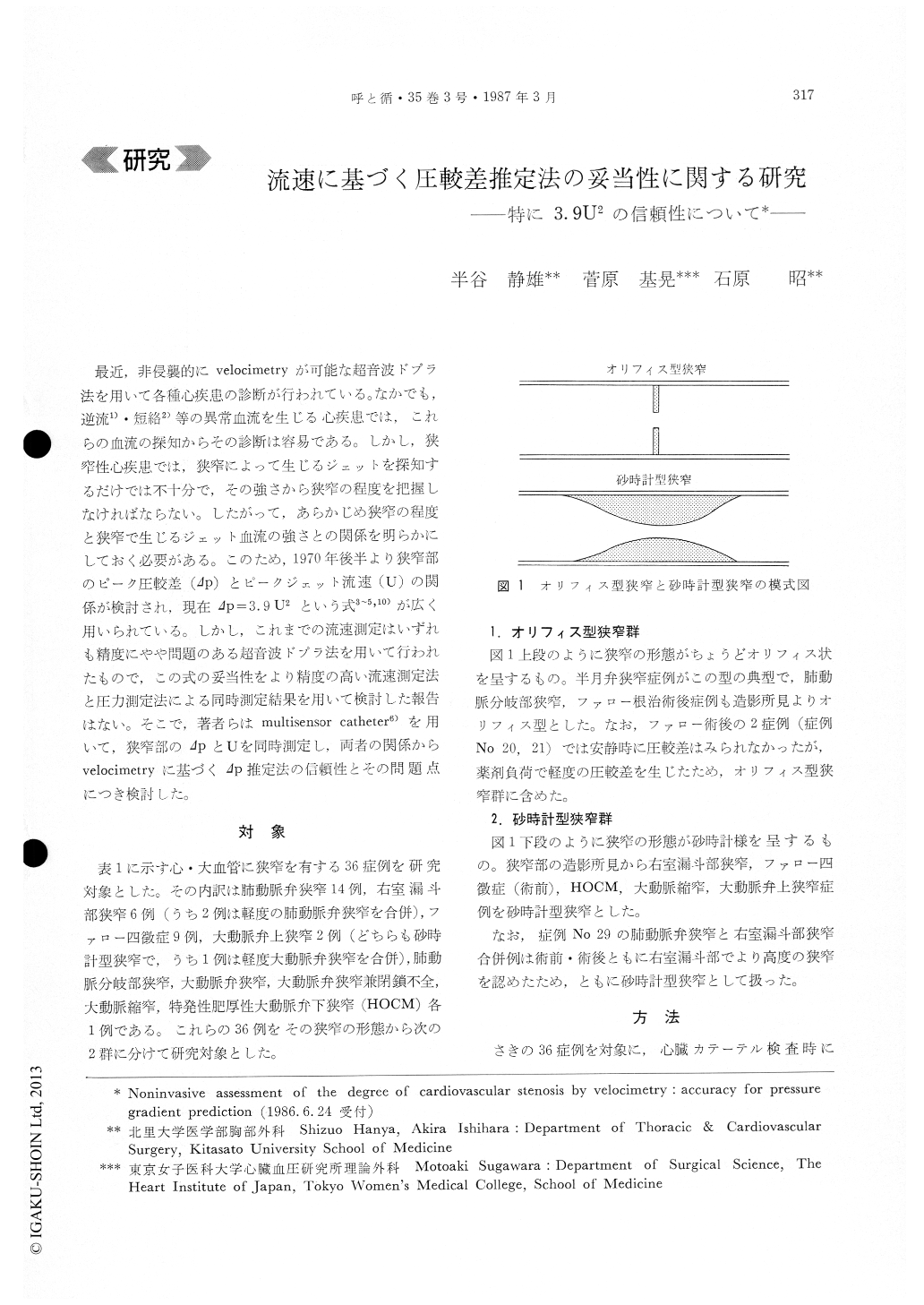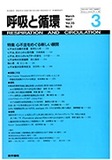Japanese
English
- 有料閲覧
- Abstract 文献概要
- 1ページ目 Look Inside
最近,非侵襲的にvelocimetryが可能な超音波ドプラ法を用いて各種心疾患の診断が行われている。なかでも,逆流1)・短絡2)等の異常血流を生じる心疾患では,これらの血流の探知からその診断は容易である。しかし,狭窄性心疾患では,狭窄によって生じるジェットを探知するだけでは不十分で,その強さから狭窄の程度を把握しなければならない。したがって,あらかじめ狭窄の程度と狭窄で生じるジェット血流の強さとの関係を明らかにしておく必要がある。このため,1970年後半より狭窄部のピーク圧較差(Δp)とピークジェット流速(U)の関係が検討され,現在Δp=3.9U2という式3〜5,10)が広く用いられている。しかし,これまでの流速測定はいずれも精度にやや問題のある超音波ドプラ法を用いて行われたもので,この式の妥当性をより精度の高い流速測定法と圧力測定法による同時測定結果を用いて検討した報告はない。そこで,著者らはmultisensor catheter6)を用いて,狭窄部のΔpとUを同時測定し,両者の関係からvelocimetryに基づくΔp推定法の信頼性とその問題点につき検討した。
To assess the accuracy of Holen's equation (Δp=3. 9 U2) for the prediction of pressure gradient (dp), sim-ultaneous measurements of blood velocity and pressure across the stenosis were performed on 36 patients (pts) with stenotic lesions of the heart or great vessels using multisensor catheter. According to the morphological shape of stenosis, patients were divided in Group 1 with orifice-like shaped stenosis such as semilumar valvular stenosis and Group 2 with hour glass-shaped stenosis such as HOCM. Good correlations was found between peak jet velocity (U) and peak pressure gradient (r=0. 9457, p<0.01,Δp=3.6582 U2+3, 6458 U-4.6078) in Group 1, but there was no significant correlation in Group 2 (r=0.5486, n.s.). Direct measured 4 were compared with those calculated from U by using Δp= 3.9 U2. The correlation was y=1.080 x + 0.0.378 (r= 0.945, p<0.01) in Group 1 and y=0.258x+26.797 (r=0.229, n.s.) in Group 2. The close relation in Group 1 provides further validation of the use of velocimetry in the assessment of the peak pressure gradient. How-ever, in a group of pts with hourglass shaped stenosis, prudence should be exercised when predicting the pre-ssure gradient by velocimetry.

Copyright © 1987, Igaku-Shoin Ltd. All rights reserved.


